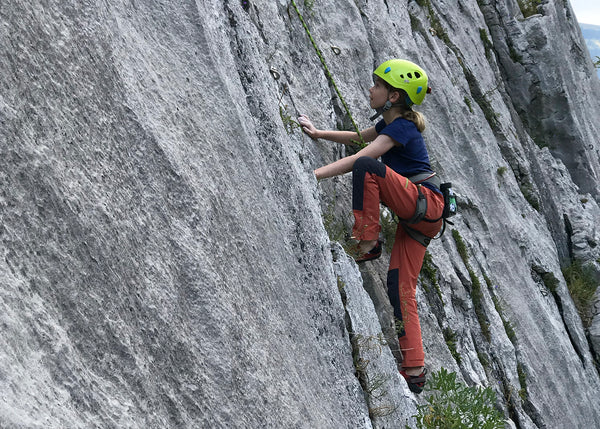Kids' Climbing Helmets Fitting Guide
Climbing helmets are designed to protect your child's head from both falling objects (loose rock, dropped climbing gear) as well as impacts against the rock face. Children are naturally a little more clumsy than adults and often have less awareness of objects around their heads. Correctly fitted kids climbing helmets will give your child both safety and confidence when on the rock face as well as when walking around near the rock (or climbing wall). A helmet has the added benefit of providing some protection from the elements too.

How to choose the right size of climbing helmet
A poorly fitted helmet is both uncomfortable and dangerous. If a child feels uncomfortable or self-conscious they will not enjoy their climbing experience and will want to remove the helmet. Modern helmets are both extremely lightweight and easy to fit, so there's really no excuse for not wearing one at the crag. In order to buy a helmet, first take a measurement of your child's head by using a tape measure, passing it above the ears and around the crown of the head. All Little Adventure Shop helmets are labelled with a head measurement range, so you can see which helmet is likely to be the closest fit.

How to check the fit of your climbing helmet
Once you receive the helmet, there are a number of features to help adjust the helmet. The first is head-size adjuster at the back of the helmet. Typically this is a plastic device that allows the helmet cradle to expand or contract to fit around the top of the head. Adjust this so that the helmet fits snugly (but not too tightly) around the head.
The second feature is the chin strap that secures the helmet underneath the chin. In all the helmets we stock these can be adjusted so that the 'Y' section centres the helmet on the head. You should never wear a helmet tipped forward or backwards, so adjust the buckle until the helmet is sitting squarely on the head. Adjust the length of the chin strap so that the strap pulls the helmet gently onto the head. When the helmet is moved, it should gently move the skin on the scalp. The strap should not be uncomfortably tight and you should be able to place a finger between the strap and the face/neck.